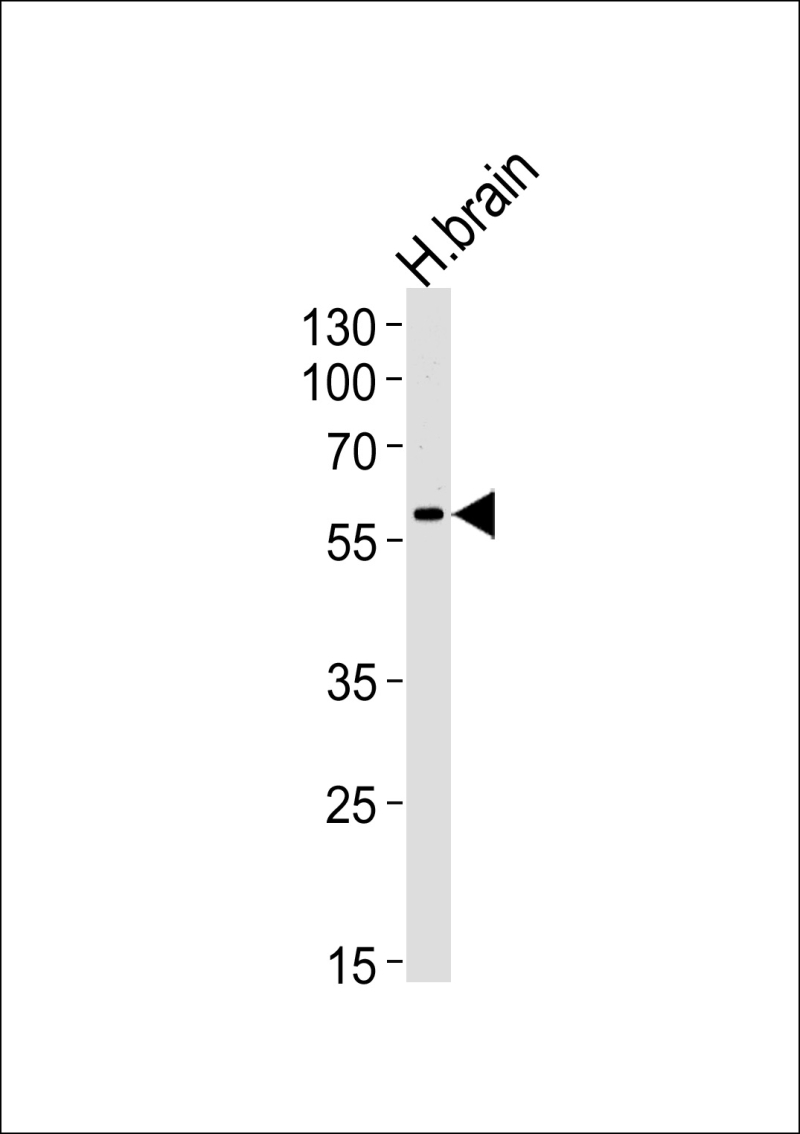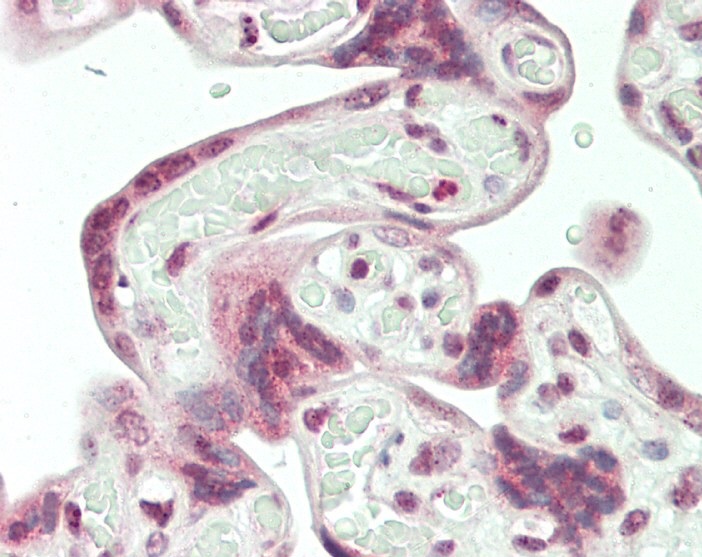

| WB | 咨询技术 | Human,Mouse,Rat |
| IF | 咨询技术 | Human,Mouse,Rat |
| IHC | 1/100 | Human,Mouse,Rat |
| ICC | 技术咨询 | Human,Mouse,Rat |
| FCM | 咨询技术 | Human,Mouse,Rat |
| Elisa | 咨询技术 | Human,Mouse,Rat |
| Aliases | Syncytin-1, Endogenous retrovirus group W member 1, Env-W, Envelope polyprotein gPr73, Enverin, HERV-7q Envelope protein, HERV-W envelope protein, HERV-W_7q212 provirus ancestral Env polyprotein, Syncytin, Surface protein, SU, gp50, Transmembrane protein, TM, gp24, ERVW-1, ERVWE1 |
| Entrez GeneID | 30816 |
| WB Predicted band size | 59.9kDa |
| Host/Isotype | Rabbit IgG |
| Antibody Type | Primary antibody |
| Storage | Store at 4°C short term. Aliquot and store at -20°C long term. Avoid freeze/thaw cycles. |
| Species Reactivity | Human |
| Immunogen | This HERV (ERVWE1) antibody is generated from rabbits immunized with a KLH conjugated synthetic peptide between 400-429 amino acids from the Central region of human HERV (ERVWE1). |
| Formulation | Purified antibody in PBS with 0.05% sodium azide,1%BSA and 50% glycerol.prepared by Saturated Ammonium Sulfate (SAS) . |
+ +
以下是关于HERV(ERVWE1)抗体的3篇参考文献及其摘要内容:
1. **文献名称**:*The envelope protein of a human endogenous retrovirus-W family activates innate immunity through CD14/TLR4 and promotes Th1-like responses*
**作者**:Rolland A, et al.
**摘要**:该研究发现HERV-W(ERVWE1)编码的Env蛋白可通过CD14/TLR4途径激活先天免疫反应,诱导促炎细胞因子(如TNF-α和IL-6)分泌,并促进Th1型免疫应答。研究提示HERV-W Env可能在自身免疫疾病中起分子模拟作用。
2. **文献名称**:*Human endogenous retrovirus type W envelope expression in blood and brain cells provides new insights into multiple sclerosis disease*
**作者**:Perron H, et al.
**摘要**:研究通过免疫组化和血清学分析,发现多发性硬化症(MS)患者脑病灶和血清中HERV-W Env蛋白表达显著升高,且其抗体水平与疾病活动相关,为HERV-W参与MS病理机制提供了直接证据。
3. **文献名称**:*Antibody response to HERV-WEnv surface peptides in patients with schizophrenia*
**作者**:Huang WJ, et al.
**摘要**:该研究检测到精神分裂症患者血清中针对HERV-W Env蛋白特定表位的IgG抗体水平显著高于健康对照组,提示HERV-W的异常免疫激活可能与神经精神疾病的发生相关。
这些文献涵盖了HERV-W/ERVWE1抗体在免疫激活、自身免疫疾病及精神障碍中的潜在作用,反映了其跨学科研究价值。
Human endogenous retrovirus W family (HERV-W), particularly the ERVWE1 locus, represents a relic of ancient retroviral infections integrated into the human genome. ERVWE1. located on chromosome 7q21.2. encodes the envelope protein syncytin-1. which plays a critical role in placental development by mediating cell-cell fusion during trophoblast formation. While HERVs are generally silenced over evolution, ERVWE1 remains transcriptionally active in specific tissues under physiological conditions.
HERV-W/ERVWE1 antibodies target viral envelope proteins or related epitopes, often studied in autoimmune and neuropsychiatric disorders. Elevated antibody levels against syncytin-1 have been reported in multiple sclerosis (MS), systemic lupus erythematosus (SLE), and schizophrenia. In MS, these antibodies may cross-react with myelin components, potentially contributing to demyelination. In schizophrenia, altered HERV-W expression and immune responses are hypothesized to disrupt neurodevelopment or trigger neuroinflammation.
The origin of these antibodies remains debated; they may arise from molecular mimicry due to HERV-W protein similarities to exogenous pathogens or from dysregulated HERV expression exposing latent antigens. Research focuses on clarifying their pathogenic role versus being disease biomarkers. Current studies explore diagnostic utility and therapeutic strategies targeting HERV-W elements or modulating immune responses.
×